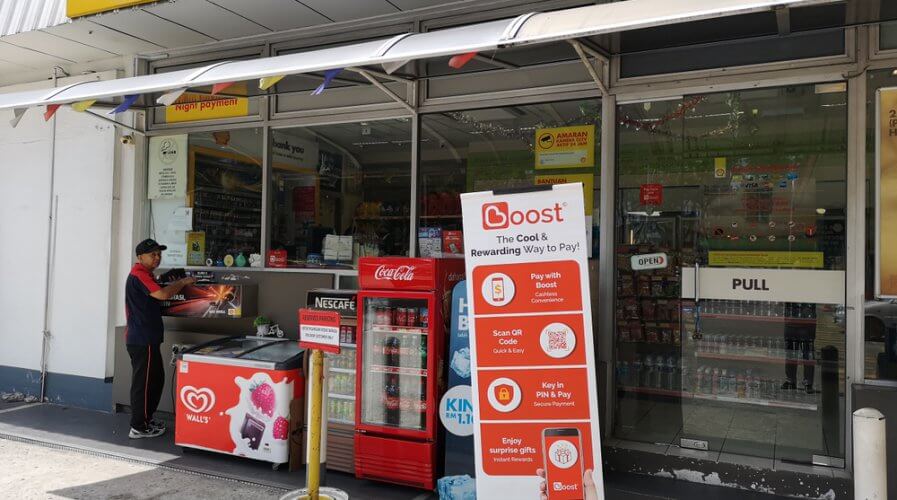
Is Malaysia now using mobile payments? Source: Shutterstock
How Axiata propelled the adoption of mobile wallets in Malaysia
LAST year, Malaysians preferred to transact in cash, especially when paying for lunch at a local restaurant and buying tickets at their favorite cinema.
However, things have taken a turn for the better since then. The country, especially in some of its top cities like Kuala Lumpur and Penang, mobile payments and e-wallets have picked up quite significantly.
One of the country’s most successful digital payment wallets, Boost by Axiata, seems to be working hard to drive the movement and revolutionize the industry.
In an exclusive conversation with CEO Christopher Tiffin, Tech Wire Asia learn more about the company, its mission, and its journey to onboarding 3.2 million users and 45,000 merchants on the platform.
“It all started with us wanting to digitize telco services. The first step we took was to reimagine prepaid top up via an app. Picking up from there, 10 months later, we evolved into a full mobile wallet which was a natural progression for us,” explained Tiffin.
When Boost first expanded into the mobile wallet space, there was a lack of understanding and trust on the concept of mobile wallets and e-money. The company realized early on that in order to propel adoption, it will need to work on driving a change in consumer behavior.
“We started by raising awareness and educating consumers, partners and merchants primarily on the convenience and the pain points mobile wallets can solve,” said Tiffin.
Boost also hosted with on-ground activation events targeted at the mass market. During Ramadhan (the holy Islamic festival), for example, the company partnered with various Ramadhan bazaars (shops) offering Boost as a payment option, thus, creating presence and visibility.
The company also engaged in strategic partnerships with universities such as UiTM and UTM that strive to be cashless campuses. The aim is to have all campus transaction here run on Boost.
“In short, we aim to be inclusive in our outreach and partnerships, and educate as many target segments as possible on the security, convenience, and simplicity of using a mobile wallet like Boost,” explained Tiffin.
Of course, the company always strives to offer products and services that are relevant and resolve consumers’ pain points — creating a positive feedback that drives adoption and creates a word-of-mouth ripple effect.
And while “reaching out” to users wasn’t easy, the company also faced challenges “converting” people interested in the app to actual users, downloading and using the app.
“Two of the primary challenges we faced were hesitancy around security and trust which were expected as we were dealing with money and the concept of e-wallets was still unfamiliar in Malaysia,” said Tiffin.
Thus, the company began engaging customers to give a deeper understanding of Boost and before long, it had a lot more customers coming on board.
It also helped that Boost was able to partner with some of the most reputable merchants in the market who were forward thinking and wanted to be part of the cashless ecosystem.
“When more well known and branded merchants adopt Boost as a payment option, it helps us create visibility and nurture a sense of trust that our platform is safe to use among both consumers and merchants,” explained Tiffin.
Today, Boost has more than 45,000 merchants comprising of three categories – cash based merchants, established brick and mortar merchants with point-of-sale (POS) terminals, and online merchants.
Fifty percent of all of its merchants are cash-based merchants such as food trucks and hawkers and Boost believes they are actually very receptive to mobile payments.
“One of the main reasons is that they started to have real-time visibility of their daily, weekly and monthly transaction with the added benefit of feeling secure not having to hold and manage (large sums of) cash,” said the CEO whose company has just won the IDC Digital Disruptor of the Year award.
Further, many hawkers felt that Boost made it convenient and hygienic not having to handle cash and cook at the same time.
For the more established, big brand merchants, Boost creates optional payment channels to digitize cash transactions and offers new payment options to consumers.
Since consumers and merchants are influenced by what their peers use, Boost pays close attention to who they partner and collaborate with. “This will build trust within both the consumer and merchant communities. Now, we’re happy to inform that more merchants are approaching us directly compared to when we started,” concluded Tiffin.
Although Boost has gained a stronghold in the Malaysian market, especially by partnering with thousands of regular vendors on the streets, it seems as though the future is bright and exciting — for the company and the country’s developing cashless economy.
READ MORE
- Ethical AI: The renewed importance of safeguarding data and customer privacy in Generative AI applications
- How Japan balances AI-driven opportunities with cybersecurity needs
- Deploying SASE: Benchmarking your approach
- Insurance everywhere all at once: the digital transformation of the APAC insurance industry
- Google parent Alphabet eyes HubSpot: A potential acquisition shaping the future of CRM




